Creating stability by working on stabilization training in combination with core work will enhance one's proprioception or the brain's ability to know where the body's limbs are in space. Because balance and stability decline with age, it is crucial to train them both for life. Balance and stability exercises train the brain's proprioception. With good stability, you don't have to force the muscles to cheat their way into maneuvering bigger moves by compensating. This will decrease your risk of tweaking joints and incurring injuries from everyday life or from being active.
The following 10 exercises will help you increase muscle fiber recruitment, creating more of a foundation in strength and power for day to day life and physical activities.
1)Plank: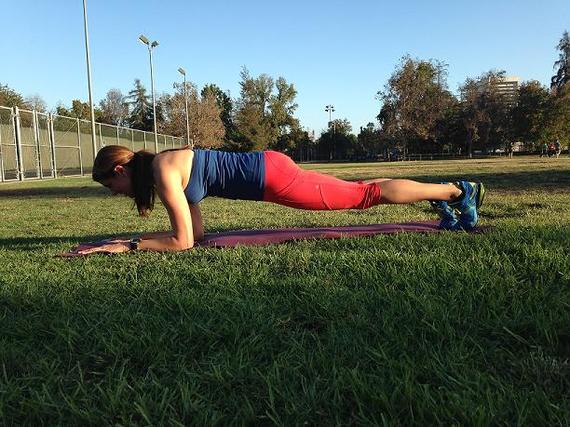
Start on your forearms and toes. Fire up every muscle from head to toe. Drop your shoulders down away from your ears, and be sure to keep the chest in alignment with the forearms. Be sure to squeeze the quads, which take some weight out of the upper body. Think about energy going through the heels towards the back of the room.
2)Side Plank (both sides): 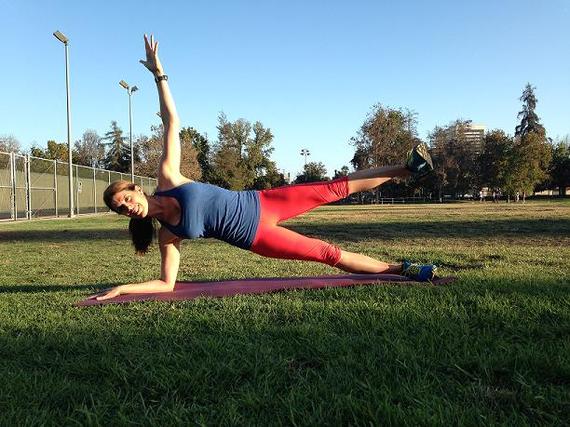
Start in plank and slowly rotate your body to face the right side of the room by stacking your left shoulder on top of your left wrist or forearm and your right foot on top of their left foot. Form a rainbow with your bottom side body to generate energy up and out of the bottom arm that is balancing them. A challenge is to lift the top leg up. An option is to use your top leg as a kickstand or drop the bottom knee to the ground and keep the top leg straight.
3)Plank with one arm lifted (switch sides): 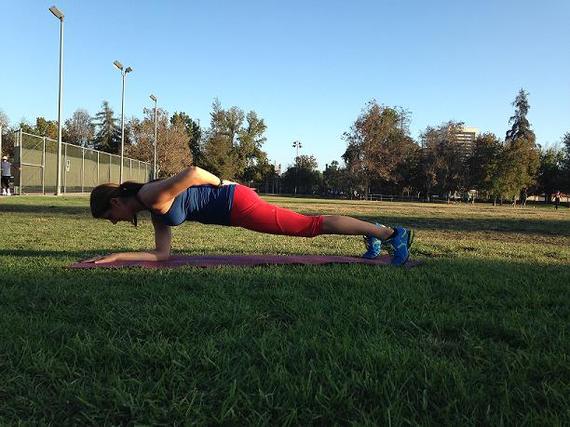
Starting in a plank, widen your stance to wider than shoulder distance for better balance. Squeeze your "core" tight and lift your right arm behind your back while balancing on the toes and left arm. Start with a 10 second hold and rest 5 seconds and switch sides. Repeat 3x.
4)Plank with one leg lifted (switch sides): 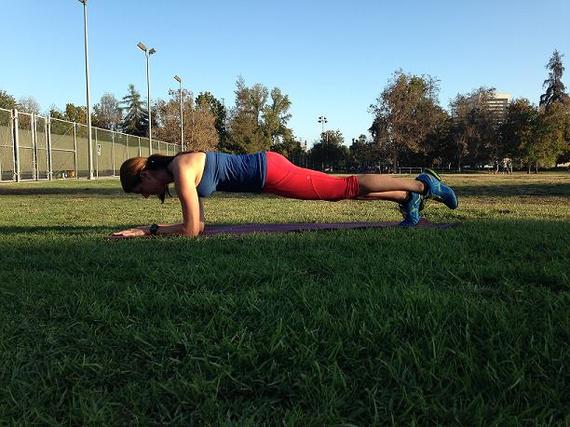
Starting in plank, close your stance to hip distance and without arching your lower back, lift your right foot only a few inches off the ground. You are balancing on your arms and left foot. Start with a 10 second hold and rest 5 seconds and switch sides. Repeat 3x.
5)Plank with opposite arm/opposite leg (Switch sides):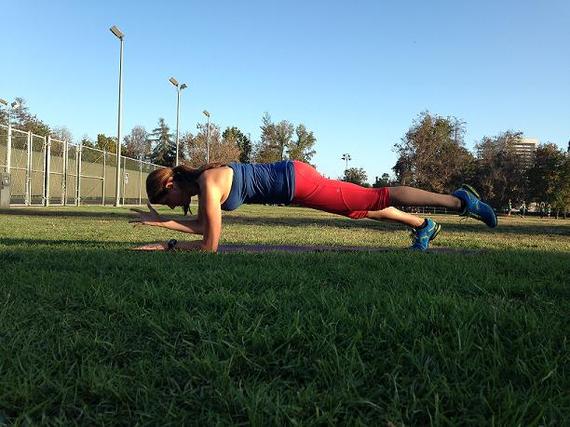
Starting in plank, same directions as above, stand with your feet hip distance apart. Lift your right arm and left leg and hold. It will be very awkward so find your center of gravity, by squaring your body to the ground. Breathe. You can hold your arm out in front or behind your back, whatever feels better in your body. Start with a 10 second hold and rest 5 seconds and switch sides. Repeat 3x.
6)Multi-planar foot touches: 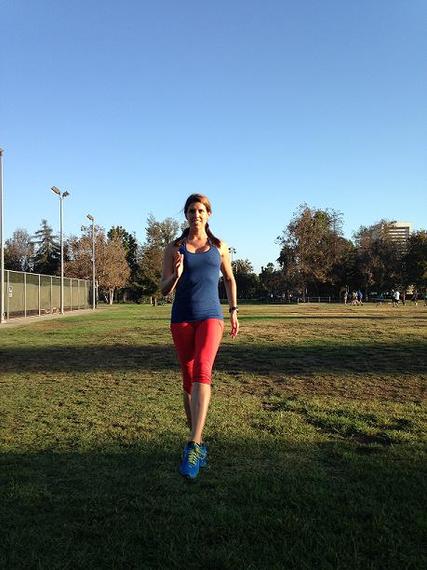
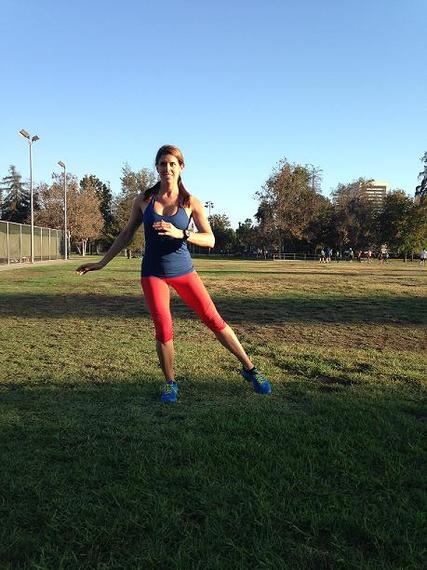
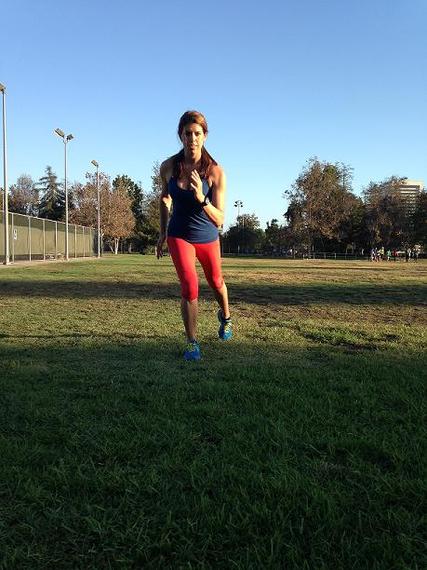
Standing on one leg -- right to start -- load your right leg with your weight while you tap forward with the left foot, tap to the side, and then tap behind yourself. The goal is to never drop that left foot to the ground. Let this exercise be on tempo. Forward-side-back x 10 reps. Switch sides.
7)Single leg squat touchdown: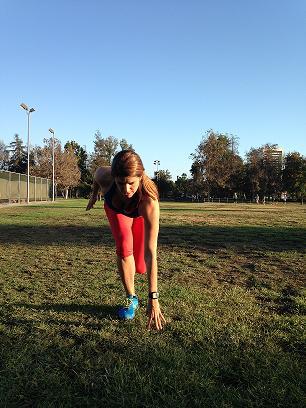

Starting on a single leg, lift the opposite leg approximately 1-2 inches off the ground and squat into the standing leg, reaching the opposite hand to touch the standing toes. Be sure to track the knee over the ankle. If you cannot reach your foot, then touch your shins. Contact with a surface is a must.
8)Tree pose: 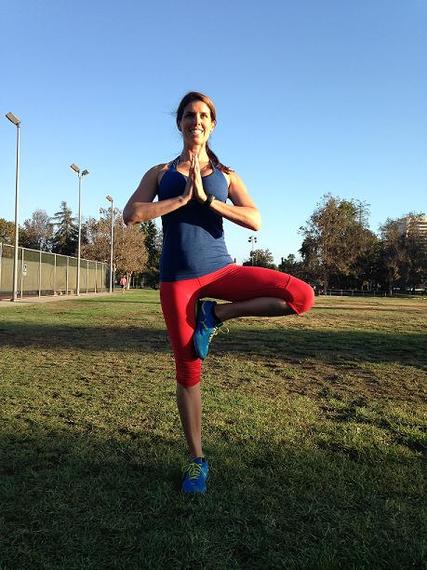
Just like yoga class, stand on one leg and put the opposite foot into the thigh of the standing leg. You have the option to put the foot on your calf. If you lack flexibility, then put your foot on your calf. Never on the knee, so that you can avoid external loading to the joints.
9)Jump to stabilization: 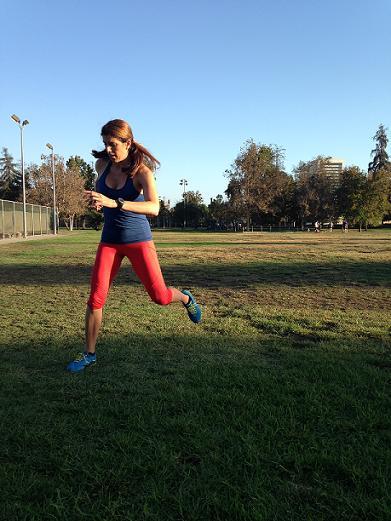
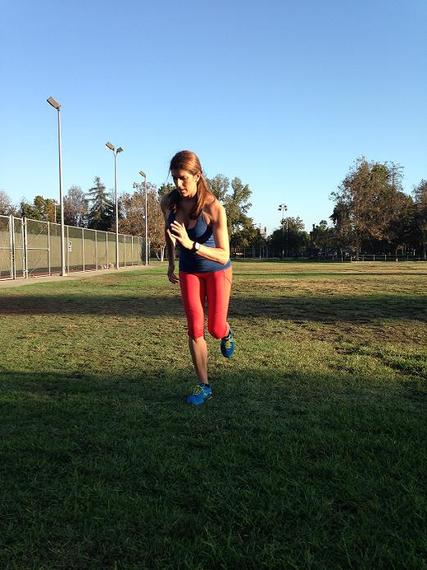
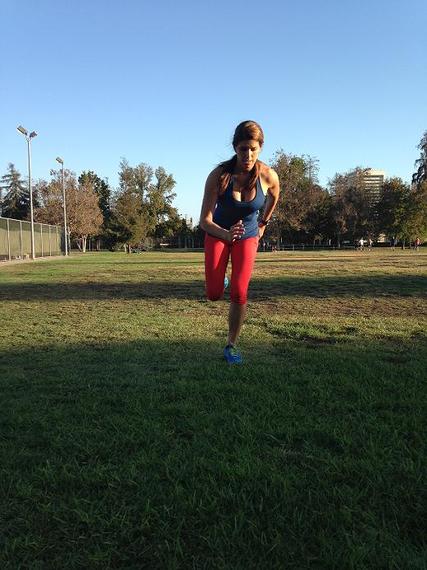
With a jump rope (or a reference point on the floor such as lines on the floor) jump on a single foot and stabilize (meaning hold the single leg stance when you land). Jump back over the rope and stabilize again. Alternate between legs, and as soon as you land and stabilize through the standing leg, the leg that is lifted will be the leading leg on the jump over to stabilization on the other side. The goal is to keep one leg lifted the whole time. If you touch the foot to the ground, simply lift it up again.
10)Jump to stabilization into single leg squat touchdown:
(combine both #9 and #7)
Just as you did a static squat touchdown above, add a dynamic component to it by jumping, stabilizing, and then mobilizing into a squat touchdown back into a single leg balance. Switch to the other side.
Stability training is key to a optimal balance and will cut back on your incidences of falling when you get older. As with any new exercise program, always consult your doctor. It's time to train your core and stability.
Photos: Amy Fleischman